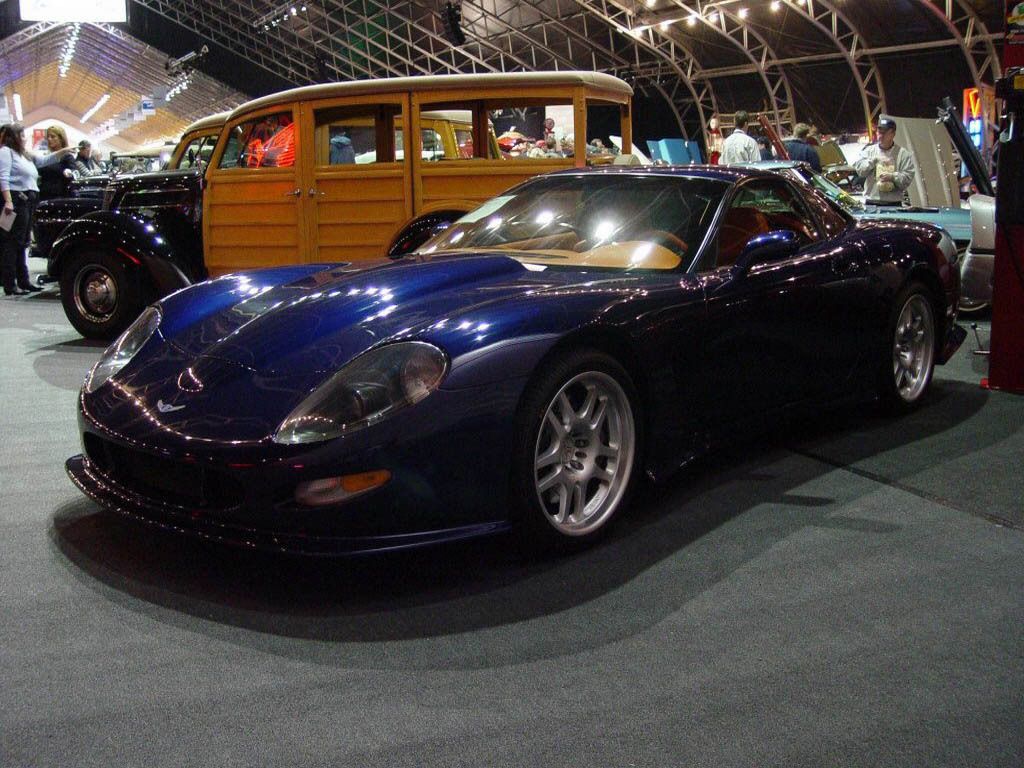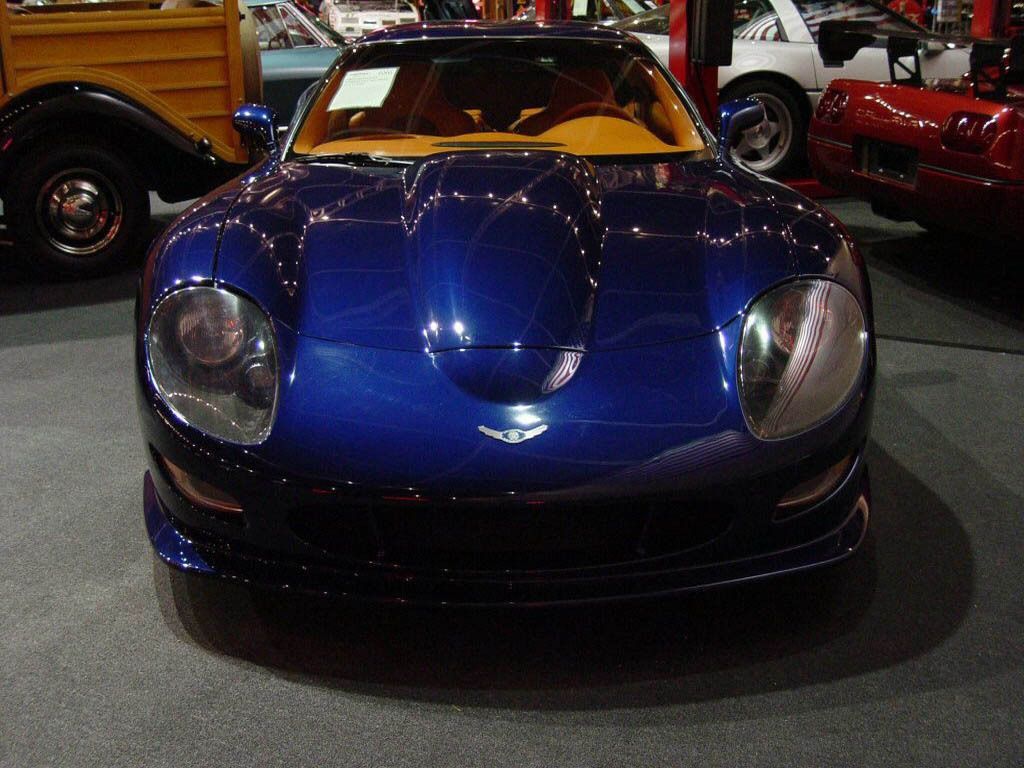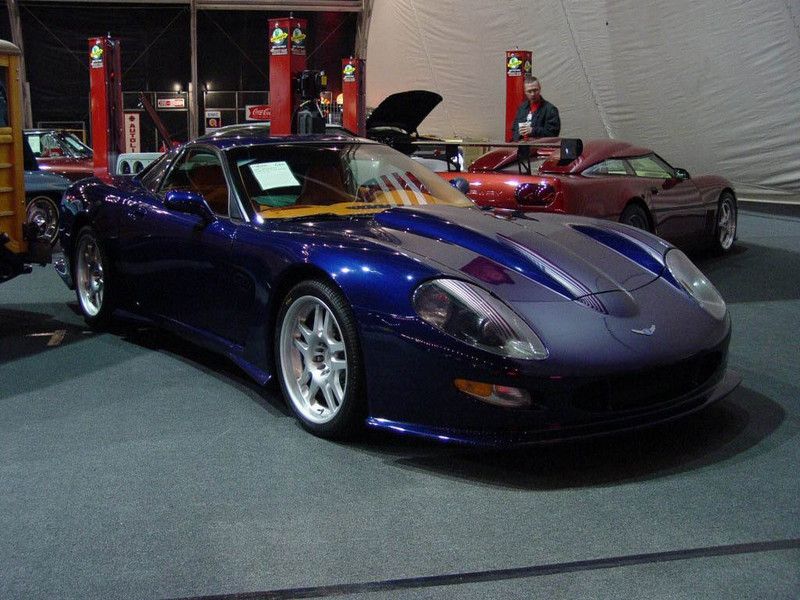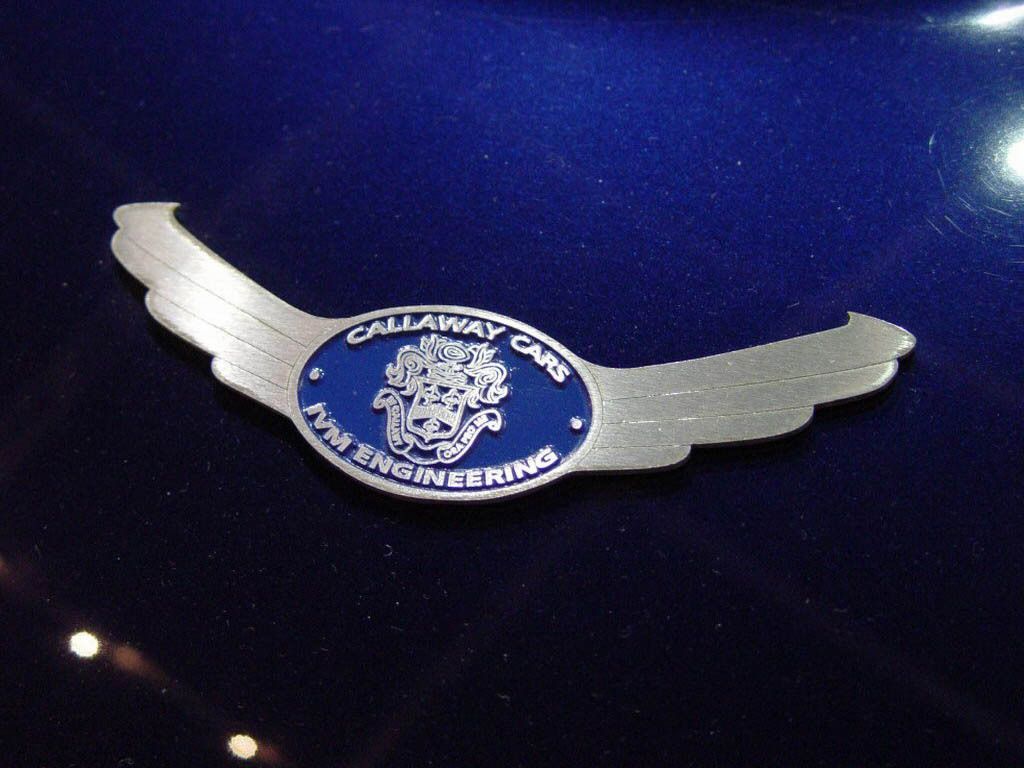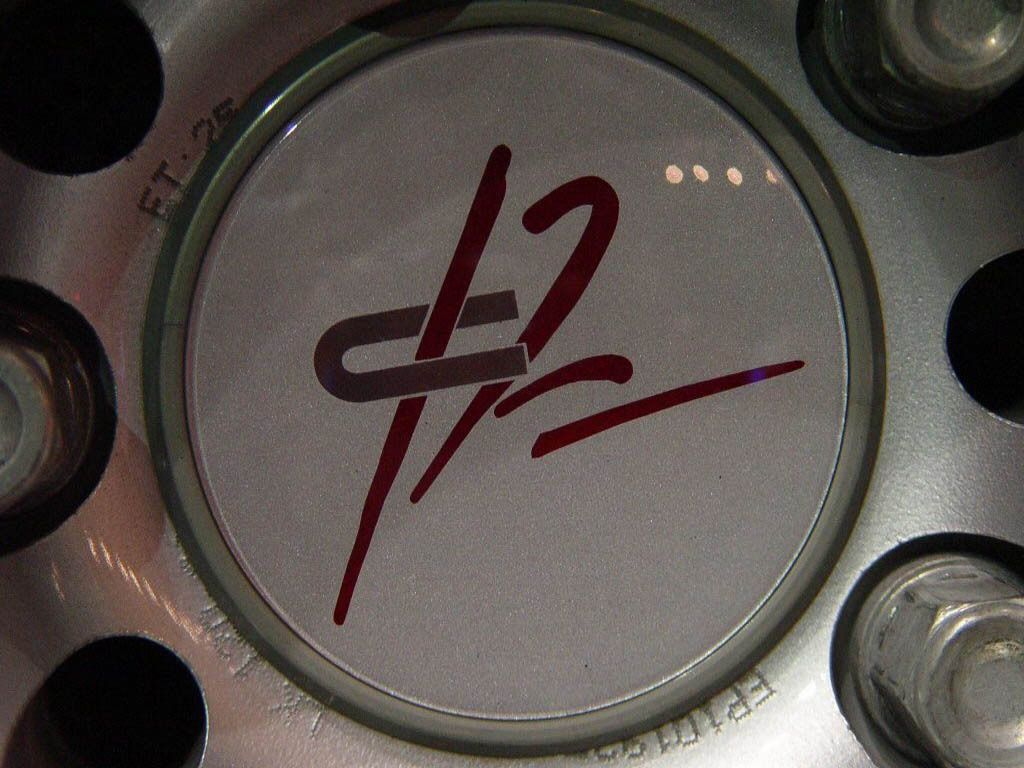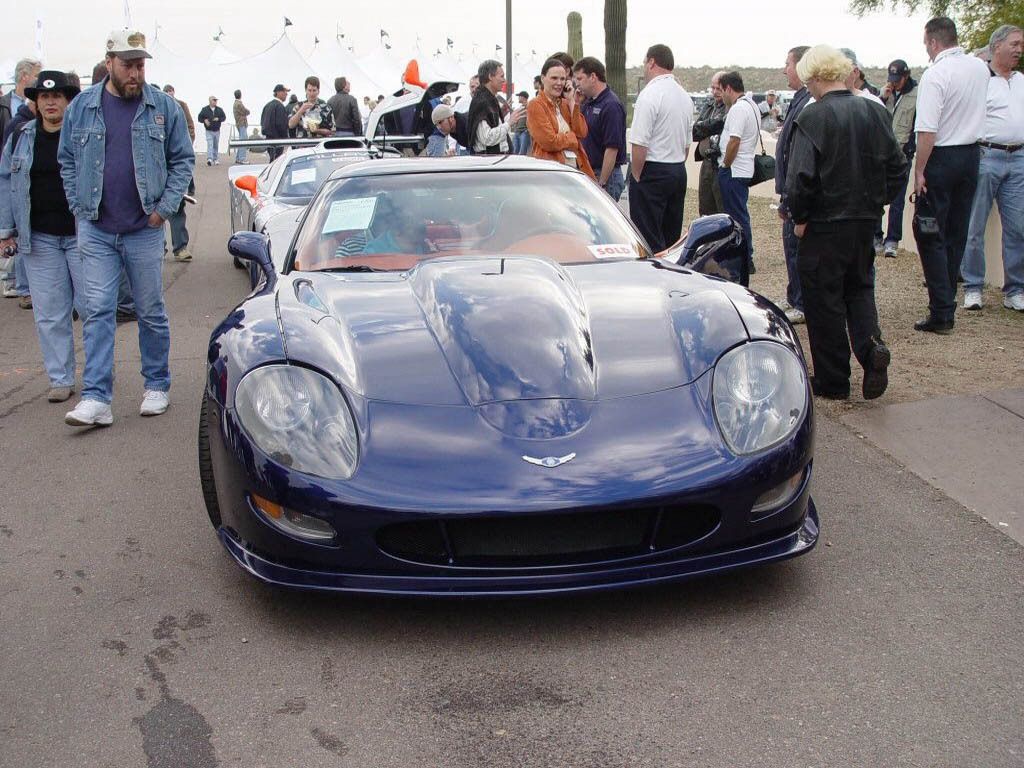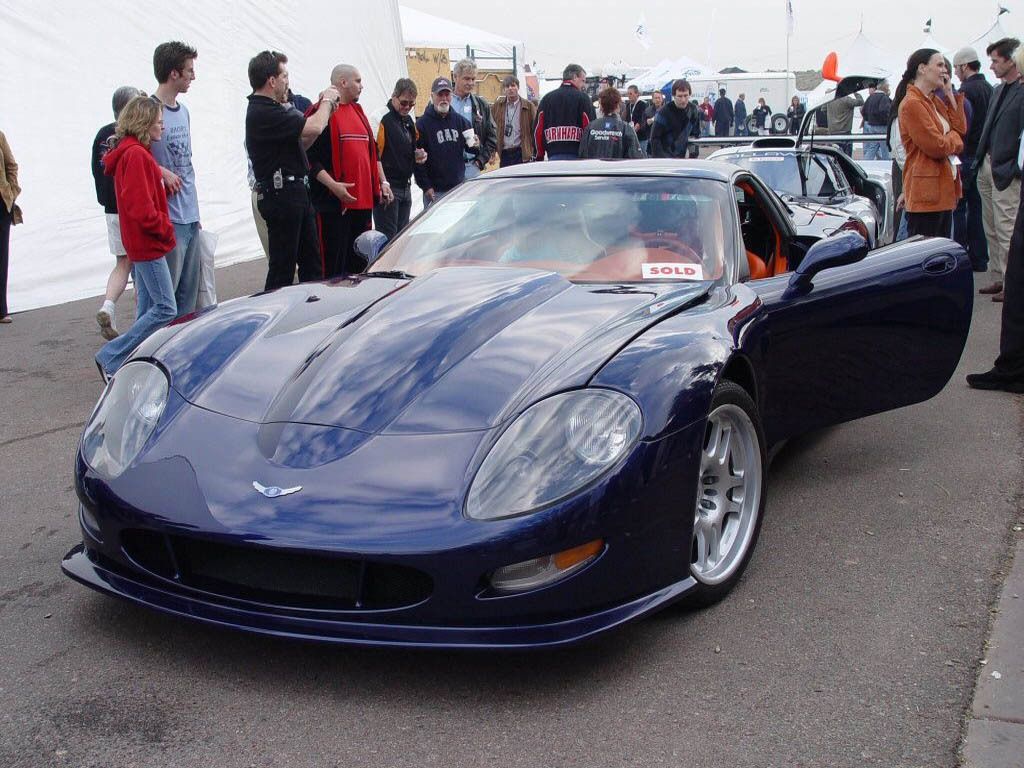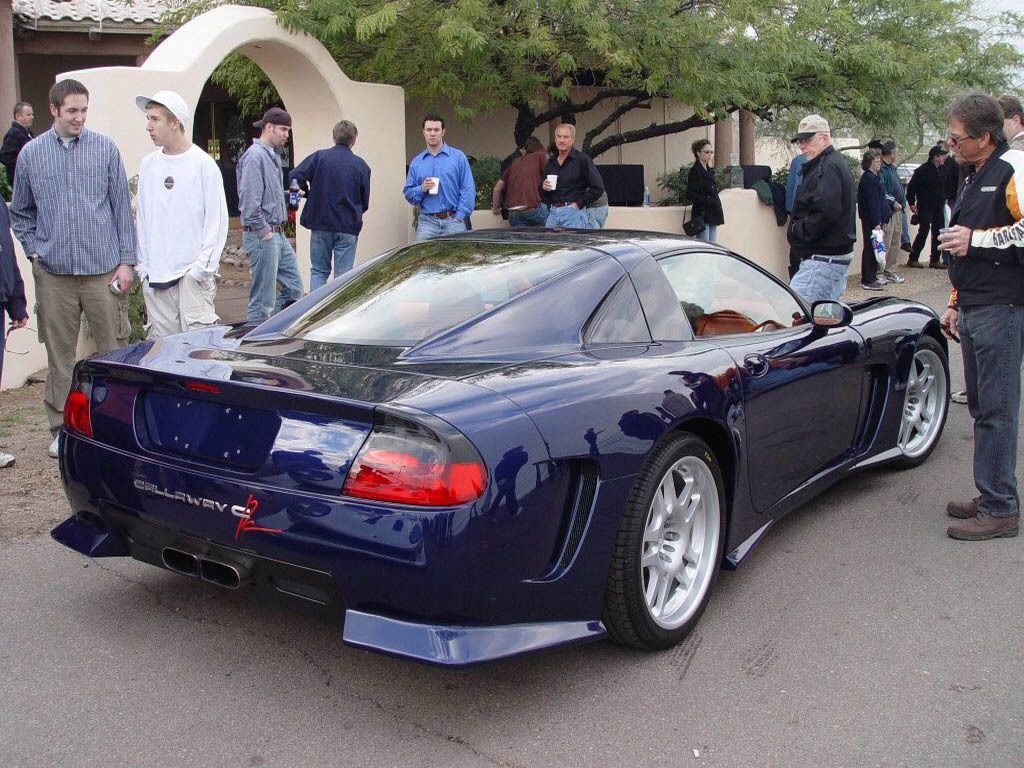chevrolet-c12-corvette-by-callaway
- Make: Array
- Model: chevrolet-c12-corvette-by-callaway
2000 - 2003 Chevrolet C12 Corvette by Callaway
- Make: Array
- Model: 2000 - 2003 Chevrolet C12 Corvette by Callaway
- Horsepower: 440@6300
- Torque: 4800
- Transmission: 6-Speed Manual
It looks like it belongs on a race track. Low and liquid-smooth, the bodywork implies the Callaway
C12 sticks to the road like a ground effects race car. Judging by road and track testing, it comes
close to that mark, being one of the rare cars that can generate more then 1.0g’s on the skidpad.
Point the c12 straight down the road and it becomes a dragster, the speedometer whipping past
60 miles per hour in just 4.7 seconds and the 100 mile per hour mark just 5.1 seconds later,
quick and yet comfortable.
That’s the way reeves Callaway likes his cars. We first heard of Callaway in 1978, when he began
creating turbocharged 3-series BMW’s in a building out in the woods near old lime, Connecticut.
Emissions rules had sucked power from automobiles back then, and the guys like Callaway were
pumping it back in with turbos. Next came turbo Volkswagens and Porsche 924’s that were so
impressive because of their added power and superb workmanship that Alfa Romeo hired Callaway
to breathe life into its gt6 model. One of these official factory Alfa's ended up at general motors.
Milford proving grounds and mightily impressed Dave McClellan's corvette development group. In
1985 Callaway received the official corporate blessing, an unusual divine approval from GM to
modify corvettes. He has been doing that ever since.
When Chevrolet produced the c5 corvette with its greatly improved chassis and powertrain, it gave
Callaway a chance to take an even greater step toward creating more then just modified corvettes.
Although his cars are corvettes legally converted to conform with governments emissions and
safety rules, there is little in the c12’s outward appearance to hint at this heritage. In fact in
Europe the cars are registered as Callaway's.
Here is why a c12 began as a set of corvettes bones in Callaway's Weingarten, Germany factory.
Bolted to the Vette's stout perimeter frame are new suspension's, upper and lower a-arms
developed and hand fabricated by Munich, Germany's IVM engineering. Coil-springs/adjustable
shock units supplement the stock transverse plastic spring. On go 12 inch diameter disc brakes
which will later be surrounded by p295/30ZR 19 Pirelli p-zero tires.
Around this new chassis is custom bodywork designed by Canadian Paul Deutschman and made of
fiberglass, carbon fiber, and Kevlar. Its Deutschman who gives Callaway's their steel aero shape, a
magic he applies to any of three c12 versions: fixed-top couple, a hardtop with a removable
central roof panel and a convertible which becomes the speedster model, featuring a unique rear
deck lid with headrests.
Callaway also changes the corvette interior to suit the new exterior. The standard seats are
swapped for custom buckets made by Koenig. Like the dashboard, door panels, and center
console. The seats are upholstered in a leather of the customers choice from a wide variety of
colors. Custom gauge faces are added, while their surround and parts of the center consol get
carbon-fiber coverings.
Next comes a trip back to the untied states, to old lime for a new engine. The power boffins in the
engine shop are world renowned for their tuning work, having been a contracted by Aston martin to
update its V-8 and gm’s Holden of Australia to modify the corporations LT1 V8’s for its
commodore coupes.
For the c12’s aluminum corvette V8, the shop blue prints the engine and does some serious
reworking such as machining the heads and the pistons to create a new combustion chamber,
changing the cam profiles, and swapping such stock parts as con rods for beefier pieces. The
results were 440 HP at 6,300 rpm, and 420 ft/lb at 4,800 versus the stock corvette’s 345
horsepower at 5,600 rpm and 350 ft/lb at 4,400 rpm.
Once the buffed up V8 is put back in the c12 and bolted to the corvettes rugged six-speed
manual transmission, reeves Callaway takes the new c12 for a shakedown drive. This is just sort
of personal attention Callaway gives his new cars…and what the customer expects when they pay
$170,000 to $220,000 for an automobile.
What his money buys is truly a custom built car. As the price spread implies, there’s a lot you can
do to personalize your C12. Every C12 owner gets an almost race car it has looks, it has power it
has the handling thankfully it also has an interior that coddles just enough and surprisingly
smooth ride that wont rattle your back teeth. That’s the way reeves Callaway likes his cars.


